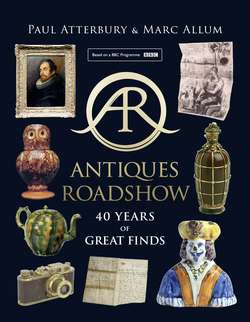Читать книгу Antiques Roadshow: 40 Years of Great Finds - Paul Atterbury, Paul Atterbury - Страница 10
A FOUJITA PAINTING
ОглавлениеThe Roadshow’s first visit to London occurred in 1990, and thousands queued at the recently restored Royal Agricultural Hall in Islington, now the Business Design Centre. On a busy day, one of the most unexpected finds was a painting by the Japanese artist, Tsuguharu Foujita. The owner, a local man, explained that he had been sitting in a café across the road watching the slow progress of the queue when his wife suggested that they collect a painting hanging on the wall at their nearby home and, when the queue had subsided, take it in for an opinion. Philip Hook, one of the painting specialists on duty that day, was delighted they had done so, for it gave him a chance to talk about one of the most interesting paintings he had seen during his Roadshow career.
Born in Tokyo in 1866, Foujita trained initially at the city’s Imperial Academy of Fine Art. In 1910 he travelled to China and London before settling in Paris in 1913 and living there until his death in 1968. Paris in the 1920s was a turbulent and exciting city, filled with artists and writers from all over the world, and over 100 galleries showed the work of 60,000 artists, many of whom were foreigners. In the cafés of the Left Bank, Foujita could have met painters such as Chagall, Modigliani, Soutine and Picasso, not to mention writers including Ernest Hemingway. It was a period of astonishing creativity, with Paris at the centre of a world that was rapidly establishing the principles and styles of modern art. At first, Foujita painted landscapes, nudes and still-lifes, but he quickly developed his own way of working – a gentle blend of Western and Japanese styles, bringing together Japanese print and Far Eastern painting and calligraphy with Matisse and Picasso.
Philip explained this to the owners and pointed out Foujita’s signature in both Japanese and Western script, reflecting his unique position as the most important Japanese artist working in Europe in the twentieth century. Philip dated the painting to around 1920, a time when Foujita’s distinctive Franco-Japanese style was just emerging, and he valued it at £50,000, a sum that visibly shocked the owners. At that time, the Japanese market was booming, so the painting might fetch less if sold today.
